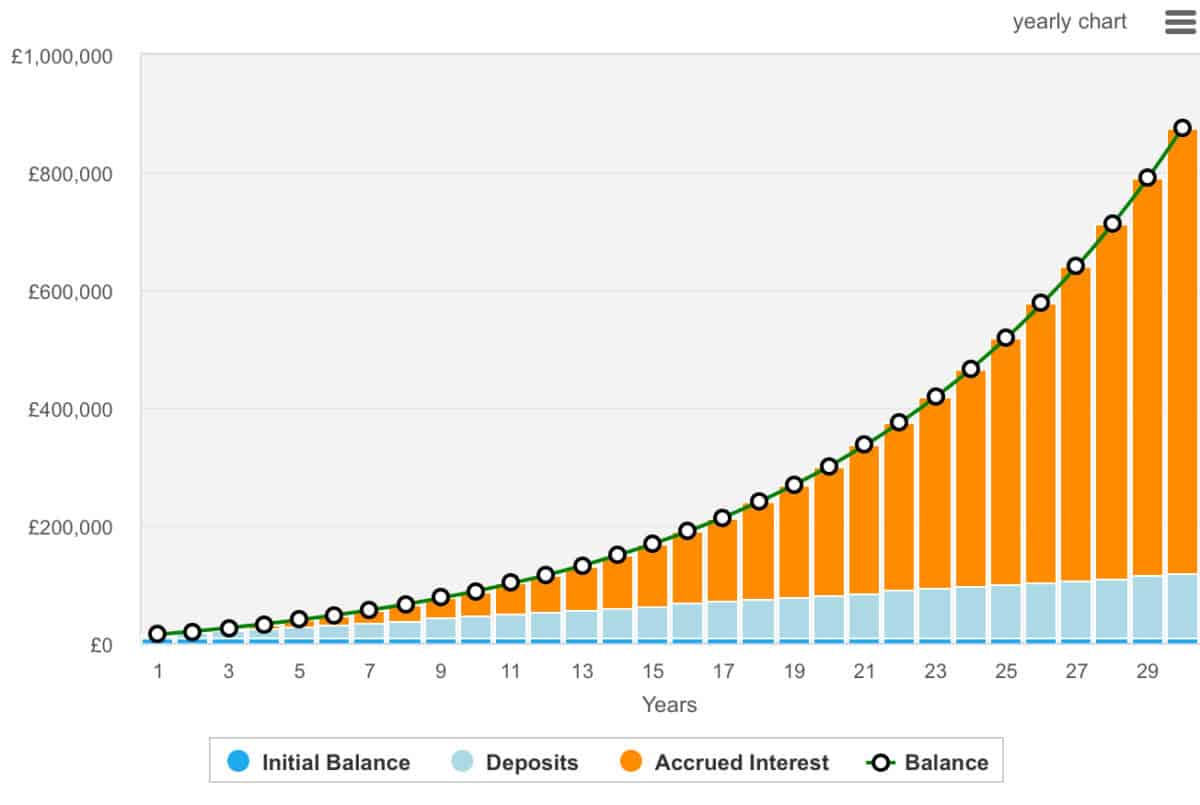Here’s how I could realistically turn £10,000 into a passive income worth £2,000 a month


Starting with £10,000 and adding £300 each month, an investor can steadily build a substantial portfolio over time, reaching the point where it provides a passive income of £2,000 a month.
This process leans on the power of compounding. This is when our returns start generating more returns.
The S&P 500 has delivered an average annual return of 10.33% since 1957. While the UK’s FTSE 100 average is lower, a stronger growth rate is possible when investors make good decisions. A 10% return would mean impressive expansion.
In the first year, a £10,000 starting amount plus £3,600 in contributions grows with interest to nearly £14,800.
As deposits and interest build upon one another, the effect of compounding becomes apparent.
By year 10, the portfolio approaches £90,000. In year 15, it’s nearing £170,000, and by year 20, the balance exceeds £300,000.
Around the 24-and-a-half-year mark, the portfolio crosses £480,000. At this point, withdrawing 5% yearly — £24,000, or £2,000 a month — becomes realistic without eroding the invested base.
The lesson is clear. Consistent investing, resisting the urge to skip monthly contributions, and allowing time for compounding means small beginnings can take us closer to financial freedom.

The hardest part
For many, opening a Stocks and Shares ISA is ann investor’s first practical step and the hardest part. An ISA enables tax-free growth, maximising compounding benefits. It also means an investor wouldn’t pay any tax on our withdrawals.
However, thankfully, it easy to open an ISA. A would-be investor simply needs to select a reputable brokerage like Trading212 or Hargreaves Lansdown, complete a quick application, deposit the initial sum, and set automated monthly investments to remain disciplined.
Please note that tax treatment depends on the individual circumstances of each client and may be subject to change in future. The content in this article is provided for information purposes only. It is not intended to be, neither does it constitute, any form of tax advice. Readers are responsible for carrying out their own due diligence and for obtaining professional advice before making any investment decisions.
Investing for success
Of course, it’s not guaranteed. Many investors lose money. This may happen because they make the wrong decisions, perhaps buying too late and selling too soon.
The current frothiness of the stock market means we have to be even more focused when picking investments. However, one stock that has piqued my interest that I wouldn’t have traditionally considered, is Card Factory (LSE:CARD).
Its forward price-to-earnings (P/E) ratio is projected to decline from about 6.2 times in 2026 to 5.6 times in 2027 and 5.2 times in 2028 — P/E based on the current price. This tells us that analysts expect the company to deliver steady earnings growth during this period. But of course, if earnings improve the share price could rise and the P/E might not fall as predicted.
Meanwhile, the dividend yield is forecast to rise from approximately 6.5% in 2026 to 7.2% in 2027 and 7.6% in 2028, with payout ratios under 40%. This is a handsome and growing dividend.
However, the business is traditional, which may limit investor enthusiasm, and the rising National Insurance contributions could impact profitability and costs. Net debt, while improving, remains a factor to monitor relative to market capitalisation.
Momentum is clearly rather low here, but that’s not stopping me from being interested. It’s one I’m adding to my watchlist, and with the current share price target 80% above the trading price, I believe it deserves more consideration.
The post Here’s how I could realistically turn £10,000 into a passive income worth £2,000 a month appeared first on The Motley Fool UK.
More reading
James Fox has no position in any of the shares mentioned. The Motley Fool UK has no position in any of the shares mentioned. Views expressed on the companies mentioned in this article are those of the writer and therefore may differ from the official recommendations we make in our subscription services such as Share Advisor, Hidden Winners and Pro. Here at The Motley Fool we believe that considering a diverse range of insights makes us better investors.





